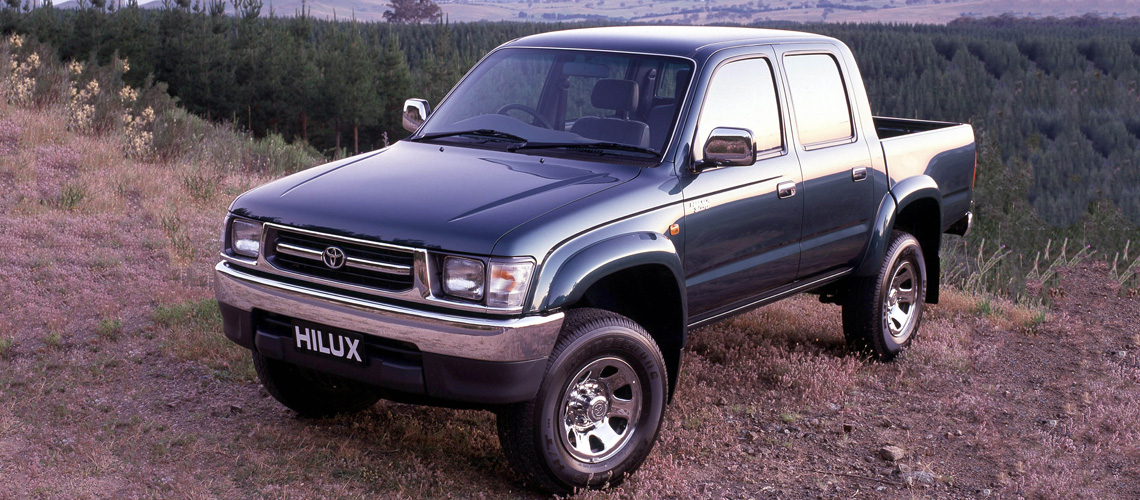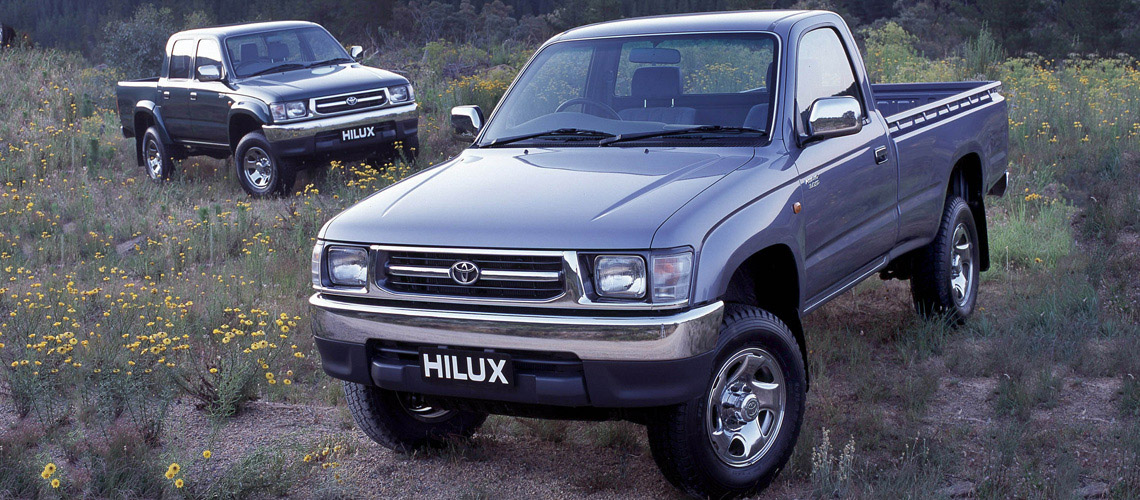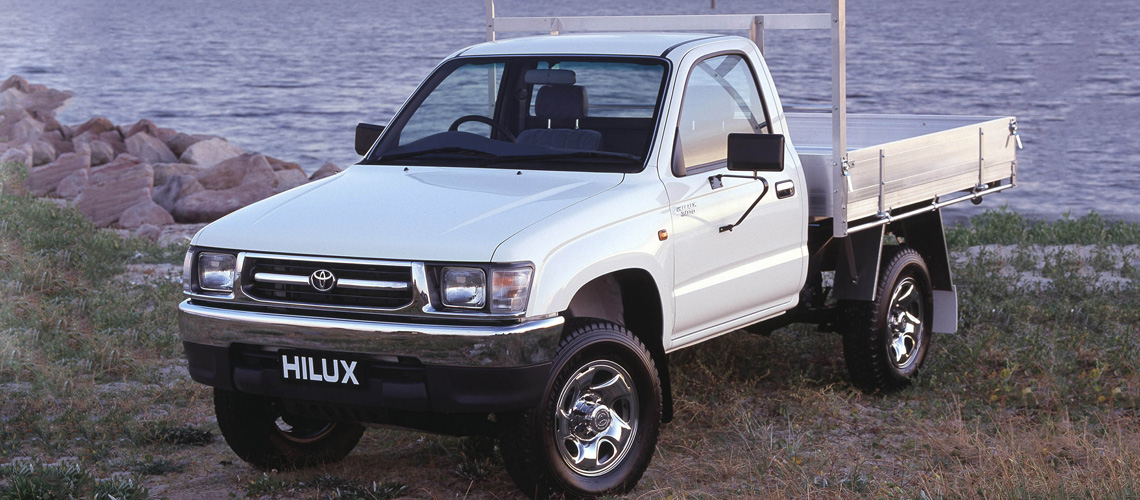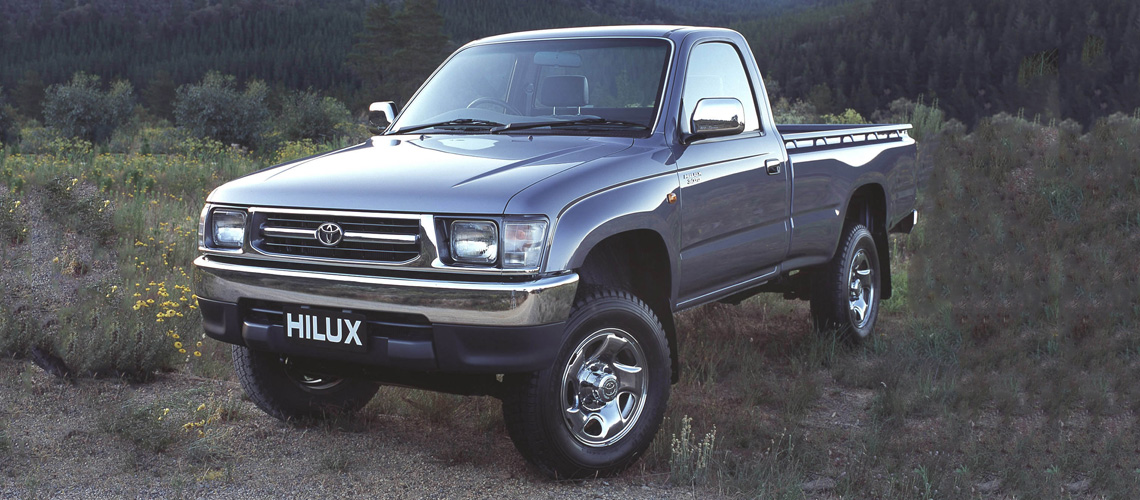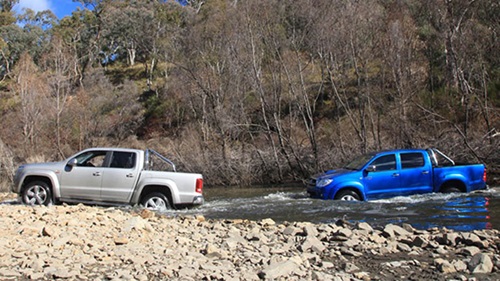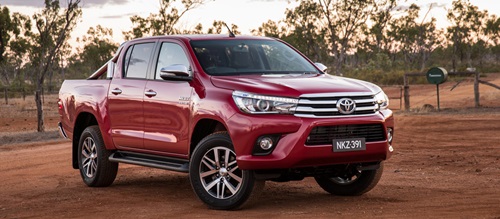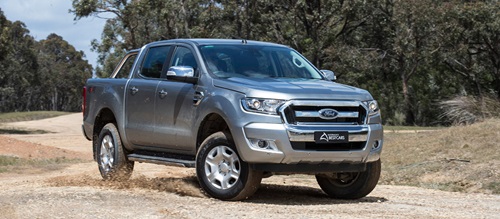Specifications: HiLux |
|
| Priced from | $26,300 |
| Engine | 3.0L turbo diesel |
| Transmission | 5-spd man |
| Fuel Economy |
8.4
GOOD
|
| Output | 126kW/343Nm |
| ANCAP rating |
|
Sales of the Toyota HiLux range of two and four-wheel drive light commercial utilities have indicated that the HiLux has all but reigned supreme in its market segment since the previous model update was released in 1989.
During this period, however, Toyota's rivals have been far from idle, offering vastly improved vehicles which have narrowed the gap or arguably overtaken the HiLux in many areas.
With the release of the 1998 model HiLux, Toyota seeks to re-establish market dominance by offering improved performance, comfort, load carrying capacity and greater levels of safety.
Visually the new HiLux has undergone quite subtle changes to its exterior, however, beneath the surface lies a host of technological improvements. There are now 23 models in the HiLux range (two and four-wheel-drive variants) and all have a rated load capacity in excess of one tonne. Five body styles, three engines, two transmissions and two equipment grades form the basis of the 1998 HiLux line-up.
The three engines presently available are all new to the HiLux range. Fitted to the entry level two wheel drive HiLux, designated the Workmate, is a 2 litre electronic fuel injected (EFI) single overhead camshaft engine, which produces more power than the superseded 2.4 litre engine. All other HiLux variants are available with either a larger capacity 2.7 litre EFI double overhead camshaft 16 valve engine, already seen in the LandCruiser Prado RV, or a SOHC diesel powerplant of 3 litre capacity.
Features and equipment
The HiLux evaluated for this report was a two-wheel drive Double Cab utility powered by a 2.7 litre petrol engine. A five speed manual transmission was fitted to the test vehicle, although an automatic transmission is available as an option. The four cylinder 2.7 litre engine delivers a class leading 108 kW of power at 4800 rpm and 235 Nm of torque at 4000 rpm. Significantly, Toyota has finally replaced the carburettor with electronic fuel injection on both petrol engines in the HiLux range. The new engines offer improvements in both power and technology.
The Double Cab HiLux is still slanted towards its commercial roots despite an in cabin makeover that boosts overall levels of comfort for the driver and passengers. Toyota has retained vinyl floor coverings for practicality reasons, but to the detriment of noise levels inside the cabin. Standard features comprise cloth trimmed seats, power assisted recirculating ball steering, tilt adjustable steering column, variable intermittent wipers, AM/FM digital radio cassette, dual cup holders, two child restraint anchorage points, rear seat head restraints, front door map pockets, a centrally floor mounted console bin, rear window demister, and numerous in dash storage compartments.
Higher levels of equipment, comfort and technology are usually associated with a corresponding price hike. Toyota, however, has managed to absorb the majority of the increased costs, with the 4x2 petrol Double Cab priced from $26,300 a minimal $300 increase over the now superseded model.
In a first for HiLux and its commercial double cab utility competitors, Toyota has made available the combination of a driver and a passenger airbag, front seat belt pretensioners and anti-skid brakes (ABS). These features are offered on all HiLux variants except the Workmate.
Toyota has made use of extensive computer collision simulations and many actual crash tests in designing the body of the new HiLux. The result is a vehicle that is claimed to meet the highest international crash-test requirements when fitted with air bags. It is pleasing to see Toyota's commitment to providing the drivers of light commercial vehicles with similar levels of safety to most modern passenger cars.
Body and finish
Visually, the HiLux has quite subtle revisions to its exterior panel work and remains easily identified as being a HiLux. Despite first impressions the body is in fact all new. Dimensionally, the cabin offers greater space due to the body being 40mm wider and 30mm taller. Front and rear wheel track is also increased by 40mm giving greater stability.
For the first time in the HiLux range, Toyota has used high strength steel to press the bonnet, front guards, outer door panels and the tailgate to give an increase in the strength and resistance to panel dents.
In keeping with previous models, Toyota has retained its double skinned wall arrangement for the rear tray. A good selection of load lashing points should assist in securing most load items. Four internal tie down hooks are located in the tray (one in each corner) in addition to a series of external tray hooks along each side panel and the tailgate.
The paint finish was found to be of excellent quality for a commercial vehicle and extends to fully cover the inside of the tray. Toyota has addressed potential corrosion problems by using anti-corrosion steel for all major panels except the roof. In addition, increased use has been made of anti-chipping paint, PVC and urethane coatings on the underbody and strategic panel edges.
Comfort and space
The interior of the HiLux remains very practical for its intended use as a work vehicle, but feels cheap due to the abundance of plastic and vinyl covered trim parts.
The front bucket seats are still quite basic in shape, lacking any lumbar adjustment or significant side bolstering. The increase in the overall cabin dimensions has translated into more leg room, shoulder space and head room than the previous model.
Rear seat passengers are the real winners in the new Double Cab HiLux. Even though the shape of the rear bench seat could still be further refined to provide better support, the seating position is much improved due to the less upright position of the backrest. Rear leg and knee room are all noticeably increased and the head room on offer is excellent. Annoyingly, however, the position of the outer rear seat belt upper anchorages caused the upper sash to pull uncomfortably across the neck of some passengers travelling in the rear. The inclusion of adjustable upper anchorage points would alleviate this problem. With the extra space and creature comforts now available, the Double Cab HiLux is well suited to carrying a family of five on the weekends, in addition to performing its primary role of heavy duty work vehicle during the week.
In cabin storage benefits from an extra glovebox on top of the left dashpad, front door map pockets and centre floor console, and limited storage space may be accessed by folding down the rear seat backrest.
Behind the wheel
The body of the Double Cab HiLux sits higher than most passenger cars and thereby allows the driver excellent vision over forward traffic. The only minor complaint in relation to vision is caused by the two rear seat head restraints which tend to partially obstruct the view to the rear when reversing.
The layout of the instruments and controls has undergone a substantial makeover resulting in a more modern, car-like feeling and look than previous models. The instrument cluster of the Double Cab HiLux is dominated by a large centrally mounted speedo with odometer, but once again misses out on a tachometer. The ergonomics of the HiLux are good, as all the controls are within a comfortable reach and were found to be easy to operate.
On the road
The new Double Cab HiLux drives more like a car than a commercial utility on the road due to its pleasant road manners and its ease of operation. The most notable improvement over the previous model is the increase in performance that is now on offer thanks to the larger capacity fuel injected engine. The engine pulls strongly in fourth or fifth gear from quite low revs, where earlier models would have required a downchange.
The HiLux was evaluated over a defined test route in both an unladen condition and while carrying a 500 kg load in the tray.
In the unladen condition, the performance of the HiLux was excellent for this class of vehicle and considering the additional power that is available, the average fuel consumption was only marginally greater than the previous model. The HiLux has the capacity to carry a payload in excess of one tonne, however when unladen the rear suspension is very firm and gives quite a harsh, bouncy ride over broken or uneven surfaces.
Carrying the extra weight was found to considerably improve the compliance of the suspension and in so doing provide a more comfortable ride. The engine's generous power and torque characteristics allowed the HiLux to perform considerably better than the previous model when laden. Interestingly, the laden average fuel consumption was lower than the superseded Double Cab HiLux, no doubt due to the engine not having to work as hard to haul the extra load.
The vacuum boosted braking system of the HiLux enabled sure footed and powerful braking. Stopping distances have been reduced both laden and unladen.
Summary
Powerful new engines, impressive safety options and more modern, comfortable interiors are the key improvements in the latest Toyota HiLux range. The Double Cab HiLux is a solid, well built utility with impressive load carrying ability and offers much improved rear seating.







